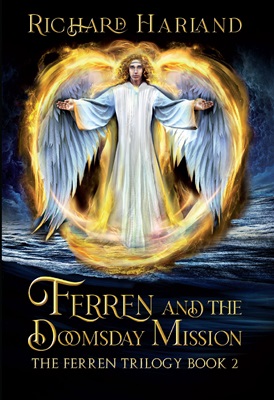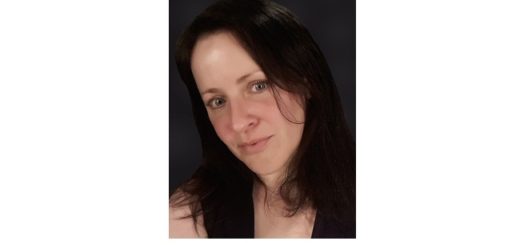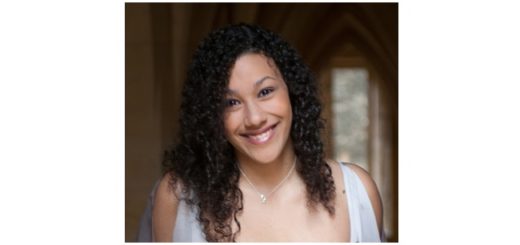Interview with Author Richard Harland
I am thrilled to have interviewed author Richard Harland, who shared with us details of his writing life, his book ‘Ferren and the Doomsday Mission‘, which was released on 29th July 2024, and answered a few fun questions. This post contains affiliate links.
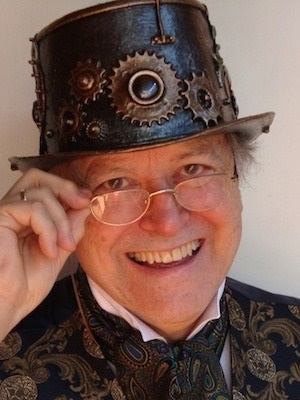
I was born and grew up in England, then moved to Australia at the age of 22. I spent much of my life messing around as a poet, musician/songwriter and postgrad student who failed to finish theses, then another part my life as a lecturer with three published academic books. But my deepest dream was to be a writer of speculative fiction – except that 25 years of writer’s block got in the way. I finally made a start with The Vicar of Morbing Vyle and jumped at the chance to be a full-time writer when Pan Macmillan took up The Dark Edge.
Since then, I’ve had 17 novels published across all spec fic genres, and ranging from adult to YA to Children’s. My most successful books internationally have been my steampunk fantasies: Worldshaker, Liberator and Song of the Slums. I’ve won 6 Aurealis Awards and the Prix Tam Tam du Livre Jeunesse in France. Book 1 of the Ferren Trilogy, Ferren and the Angel, won the Reader Views Silver Seal Award for Teen Fiction in 2024.
1) Where did the inspiration for your book come from?
The Ferren Trilogy had one single generative spark – it came from a dream. Seriously! I dreamed I was under a blanket, then peeked out and saw uncanny, moving lights in the night sky and heard ominous, inexplicable sounds. Suddenly I knew – the way you can know things in dreams, as though someone had told me – that this was the great war going on between the armies of Heaven and the armies of Earth.
I was still watching when one of the lights came hurtling down out of the sky straight towards me.
That was the moment I woke up, but I was still in that drowsy, not fully conscious state when you come out of a dream too quickly. And I decided to myself, ‘That must have been an angel shot down and crashing to the Earth. And she must have landed very close by. Perhaps she’s dead or perhaps she’s injured.’
I thought some more about it as I came to full consciousness. One thing I thought was, ‘I’ve been given the start of a novel.’ And I had! It took me decades to fill out the background behind that first scene, decades of research and story-planning, and many, many drafts and versions. But through every draft and version, one thing always stayed the same: the opening scene. With Ferren the protagonist taking my place, the trilogy has always launched off with the same first ten pages of Ferren and the Angel. It was handed to me on a plate!
2) How did you plan out the plot?
I think you need a whole lot of planning for an original fantasy world, there’s just so much to put in place. Tolkien took 20 years, didn’t he? I had a book full of material before I started writing the first version of The Ferren Trilogy, which was called The Heaven and Earth Trilogy. I guess I should explain about the two versions …
I wrote the first version of Book 1, Ferren and the Angel, and my agent sold it to Penguin Australia – who published it only in Australia. Then Penguin wanted a sequel from me in a year – help! I wasn’t ready. I’d always thought of Ferren and the Angel as a standalone, and suddenly I had to expand the world and plot to carry through another novel (and then another, a year after that). I spent a decade developing the material for the first book, now I had to do as much again in a few months.
And I did – sort of! I came up with some great ideas. The trouble was, I was coming up with them as I went along, I didn’t have time to bed them down in a totally satisfying narrative. I needed more plotting time before I started writing! Of all the books I’ve ever written, the three books of the first Heaven and Earth Trilogy were the ones I hankered to revise. And I always knew Book 2 of the trilogy could have been done much better.
But they came out anyway, and I moved on to bigger successes with other books. Penguin Australia didn’t market them well (internal publisher politics – don’t get me started!) and after a few years let them go out of print.
Now the best bit of the story! Fans of the first version of the trilogy didn’t like it going out of print and refused to let it die. They hounded publishers and fought tooth-and-nail to bring it back to life – and one day, an email from IFWG Publishing arrived in my inbox asking if I would agree to a reprint. Yay! Yay! Yay! for people power!
But I didn’t agree to a reprint – only a total rewrite! Which is how the old Book 2, Ferren and the White Doctor, became a new Book 2, Ferren and the Doomsday Mission! I am so, so satisfied with the way it’s turned out now – finally, it has a narrative shaped the way it was always meant to be!
3) When did you choose the title for your book?
I’ve had publishers who lay down their own titles for my books, but Penguin Australia didn’t. At the same time, I’ve learned with experience – there is a marketing side to titles! I still think The Heaven and Earth Trilogy was an excellent and appropriate title, but no one ever used it! The thing with fantasy series is that nobody wants to bother with two titles, and the title of the first book tends to stand in for the series too. (Game of Thrones, anyone?) The easy way to refer to 3 books beginning with the same name is to call them the Ferren books. So they became The Ferren Trilogy.
With Ferren and the White Doctor, Penguin went along with my choice of title, but it wasn’t a great choice. It fits with the focus of the second book, but only when you know the special sense of capital-D ‘Doctor’ in Ferren’s world. And ‘White’ – I thought it sounded interestingly enigmatic, but now it sounds just odd. Plus ‘white’ has become a loaded term nowadays. ‘Doomsday Mission’ fits with the book’s focus in a different way – but I was conscious of marketing there too! Ferren’s doomsday mission would have been what everyone still calls a ‘suicide mission’, except that you can’t afford to have the word ‘suicide’ in a title. You’d risk becoming invisible on the web!
4) How did you come up with the names for your characters?
Ferren started out as Ferris – both names sound a bit like ‘feral’, and my protagonist is a lone wolf sort of character. But then there was the other Ferris of “Ferris Bueller’s Day Off”! In the end, I accepted that the association to the movie was too strong and changed to Ferren.
Miriael and Asmodai are traditional names from angelic lore, and the figures they name fit with the parts they play in the trilogy. At the same time, they’re not well known – I had to avoid that, especially for Asmodai. And then – last criterion – I like the sound of both names!
5) How did you go about researching the content for your book?
The dream that launched the trilogy gave me more questions than answers. What sort of world could explain a war between the armies of Heaven and the armies of Earth? And why was I (Ferren) hiding under a blanket? I loved working out the whole history that led up to that scene – but I also knew I needed to learn far more facts from traditional religious lore.
That began a long, long period of research in university libraries. I spent hours in dim, musty corners poring through books that nobody had opened in ages! Angelology is a vast field of esoteric knowledge – everyone knows the names of a few major angels, but there are a thousand more hidden away in not-totally-orthodox sources like the Apocrypha and Gnostic texts, the kabala, the writings of the sufi mystics in Islam. (Christianity, Judaism and Islam all come together in angelology.) Fascinating stuff – all the old myths involving angels, fallen angels and the structure of Heaven. For the first time in my life, I loved the research for its own sake, and went far beyond what I needed for the books.
6) What made you choose this genre?
I think fantasy chose me – once I’d finally escaped from the disastrous delusion of being a literary writer. I love imagining new worlds, and worlds that aren’t standard epic fantasy too. The Ferren Trilogy is its own sub-genre. The history behind the books starts out from an SF premise – what if scientists discovered a way to bring back the consciousness of someone who’d died in our world – and that patient then reported they’d been to Heaven among the angels? Thence to a whole future – cybernauts, the Trespass upon Heaven, the Age of the Undead – which ends up, 1,000 years from now, as the ultimate post-apocalyptic dystopia. After endless war and destruction, the Earth is a ruined wasteland, the descendants of the original human beings like Ferren are reduced to utter ignorance and deprivation, while the armies of Earth are composed of artificially created Humen. There are steampunk elements and surrealist elements in this world, along with the supernatural Celestials and even some scenes set in Heaven.
But what I love about fantasy isn’t just the imagining – it’s the challenge to make it real afterwards, so that a reader experiences it as if they were actually there. I often draw on real bits of experience, but translated/accentuated until they apply to a fantasy world that nobody’s ever experienced. Early on in Ferren and the Doomsday Mission, there’s a scene where Ferren and Miriael are hiding under the deck of an overbridge while a vast army of Humen vehicles and troops rolls and pounds right over their heads. I went back to a memory that’s always stayed with me, when I was about 8 or 9, living in Hadleigh (Suffolk). At the top of our road was a railway embankment, and two or three times a day a train came slowly along the tracks. We used to hide behind a bush at the top of the embankment and feel the thunder as the train passed over above us. Not literally over the top of our heads, but it seemed like it was!
7) How long did it take you to complete your book?
The first version of Ferren and the Doomsday Mission took less than a year to prepare and write because I had to meet my publisher’s deadline. I wrote the second version virtually without looking back over the first, and it took me 3-4 months. All those years when it sat at the back of my mind made the difference – I knew how to plant all the seeds that would grow into the full story, and it seemed to just unfurl all by itself. The only thing slowing it down was my speed on the iPad keyboard.
8) Can you describe your book in three words?
Visceral. Film-like. Out-of-this-world.
9) What’s the hardest part of being a writer?
I think the hardest part of writing is getting everything right in the early part of a novel. For me, writing is like riding on the back of some huge, lumbering beast – the story has its own weight and momentum, and once it’s got going, you can’t just wrench it around where you want it to go. Where I want to go – in the Ferren books and all my books – is a huge, rolling climax! That’s what I love when I write because it’s what I love when I read. Yet the climax has to come naturally, which means I have to nudge the beast in the right direction while I still have the chance – right from the start of the novel. For me, Ferren and the Doomsday Mission is my ultimate example of getting it wrong (first version), then getting it right (second version).
The easy part of being a writer is when the story takes over along the way, and I just hang on for the ride. It’s the most exhilarating feeling in the world!
10) Why should our readers pick your book up?
To step into a new world and share some mind-blowing experiences. E.g. how it would actually feel to be an angel of pure spirit fallen to earth and experiencing the sensations of dirt and grit and grass for the first time ever.
Publisher – IFWG Publishing International
Pages – 255
Release Date – 29th July 2024
ISBN 13 – 978-1922856586
Format – ebook, paperback
Synopsis
The unique friendship between an angel and a human is the only hope for the future – but can they remain friends?
It’ s one thousand years since medical scientists brought a dead brain back to consciousness. When they discovered the reality of life after death, they laid claim to Heaven and set off a war against the angels. Now the Earth is a ruined wasteland. Descendants of the original scientists continue the war with their armies of artificially created Humen. When the greatest of Doctors, the all-knowing Doctor Saniette, takes control of the Bankstown Camp, the fighting moves to a terrible new phase.
Miriael is the angel who fell to Earth, ate mortal food and can no longer return to Heaven. Ferren is the young tribesman who has been her only friend since her own kind abandoned her. Together, they work to unite the tribes in an alliance independent of the Humen. But suddenly Miriael has another friend. A beautiful, caring angel visits her in secret and offers her what she most desires: the chance to return to Heaven. The consequences will be extreme … for her, for Ferren, for the world.
Purchase Online From:
Fun Questions

1) Do you have a writing buddy (i.e. a pet)?
My writing buddy is Yogi the Labrador. He lives in a world of smells and possible food, I live in a world of imagination. But we like to hang out together when I’m writing.

2) Do you have any writing quirks?
One quirk is what I call to myself ‘pre-filming’. I stop writing every day at 1.30 p.m., even if I’m in mid-paragraph. Then, later in the afternoon, I mull over what I’m going to be writing next day, imagining how it’ll unfold, how it’ll look and sound and feel – like watching a movie in my head. (I guess I’ve always had a strong visual imagination.) I don’t make notes, because the real secret is what comes next … I sleep on it! Somehow my overnight unconscious goes to work and firms it up. By the next morning, it’s as if it really happened, and all I have to do is record it.
3) Where do you write?
I write lying back on the bed, using a clipboard for scribbled drafts and an iPad for typing up. The habit began after I came down some stairs on my back, and it was too painful to sit upright for months. Now I like to think it helps the flow of blood to the brain. That’s my excuse and I’m sticking to it.
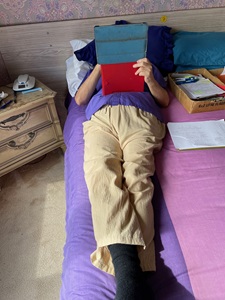
4) Your book has been made into a movie, you’ve been offered a cameo role, what will you be doing?
I’m not allowed to be a major character? OK … I’m Flens in the climactic scene where Ferren and the rest are about to cut Miriael down from her stretcher and rescue her. I stick out my head between the banks of black boxes in Doctor Saniette’s huge dome and yell, “Yaroo! Yaroo I’m your saboteur! Come and get me! Yaroo!” All the Hypers and Queen-Hypers turn in my direction, and Doctor Saniette shuffles his giant hoof-like feet as if there’s some insect down there troubling him. Then I run, still yelling, as Hypers and Queen-Hypers give chase. My job is to create a distraction.
5) A talking owl has just finished reading your book, what’s the first thing he says to you?
‘Whoo-hoo-whoo-hoo! You had me on the edge of my perch with that epic fight early on between the seabirds and the tribe of the Sea-folk. I was tensing my talons so hard they hurt! But why did you go and let the wrong side win?’
Author links
Goodreads
Website
A big thank you to Richard Harland for sharing his writing life with us and for a wonderful interview.


